"At the last dim horizon, we search among ghostly errors of observations for landmarks that are scarcely more substantial. The search will continue. The urge is older than history. It is not satisfied and it will not be oppressed." -Edwin Hubble
It still boggles my mind that a scant 100 years ago, many of the greatest astronomers and physicists of the day still thought that the Milky Way was the only galaxy in the entire Universe. It wasn't until the 1920s that Edwin Hubble definitively showed that the great Andromeda Nebula was actually a separate galaxy from our own.
We now know that Andromeda is not only the closest large galaxy to the Milky Way, but it's also moving towards us. In fact, it's estimated that in the next few billion years, the Andromeda galaxy and our own Milky Way are going to merge together in a great galactic collision.
"What's that going to look like," you may wonder.
Well to us, inside our galaxy, other than the constellations changing slightly more quickly than they do now, and the extra bursts of star formation and supernovae that accompany major galaxy mergers, we won't have anything all that out of the ordinary happen. The odds that even one of Andromeda's stars, for example, will come within Pluto's orbit of our Sun are something like one-in-ten-million.
But to someone outside our galaxy, if they had the ability to watch the collision for hundreds of millions of years, they would indeed see something spectacular.
They would witness one of the Universe's great catastrophes: the merger of two roughly equal sized, large galaxies. Despite the fact that Andromeda is (slightly) larger than our own galaxy, we are significant enough that the great spiral structure in both galaxies is pretty much bound to be destroyed over the course of this cosmic trainwreck.
But rather than simply show you a succession of images that might represent what these two great galaxies will do, I can do you one better. Because what we've been able to do -- with our understanding of galaxies, gas, dust, and dark matter -- is to simulate in great detail what this collision is going to look like. And what we find, at many different steps along the way, is that there are interacting galaxies throughout the Universe that look an awful lot like what our simulations show. Have a look at this mind-boggling video, courtesy of New Scientist.
Of course, I wouldn't simply leave you out there, on your own, without finding out all the information about these Hubble images of interacting galaxies, where they come from, and what they mean for us. Let's have a look at what we just saw!
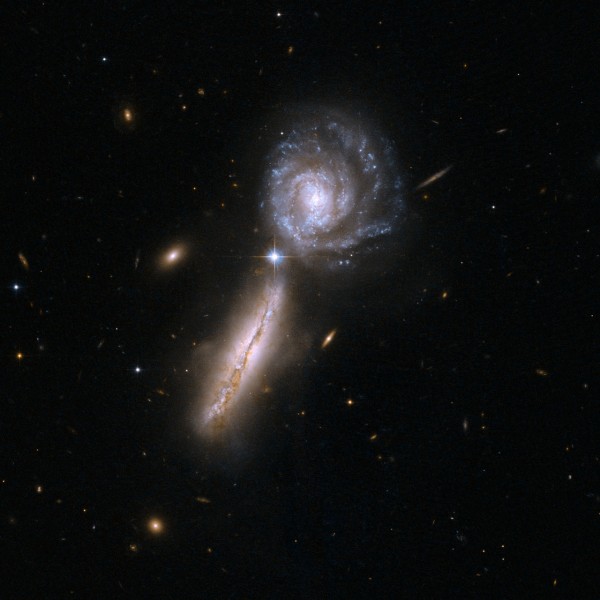
Interacting galaxy pair UGC 9618 shows two spiral galaxies at severe angles to one another in the very early stages of interaction. The two disks are still quite separate from one another, but both galaxies are extremely bright in the infrared, as the gravitational interaction between the two galaxies causes an extreme increase in star formation throughout the entire system. In fact, the star formation rate for each entire galaxy is comparable to that found in the most vigorous, active, giant star forming regions in the Milky Way.
And they haven't even collided yet.
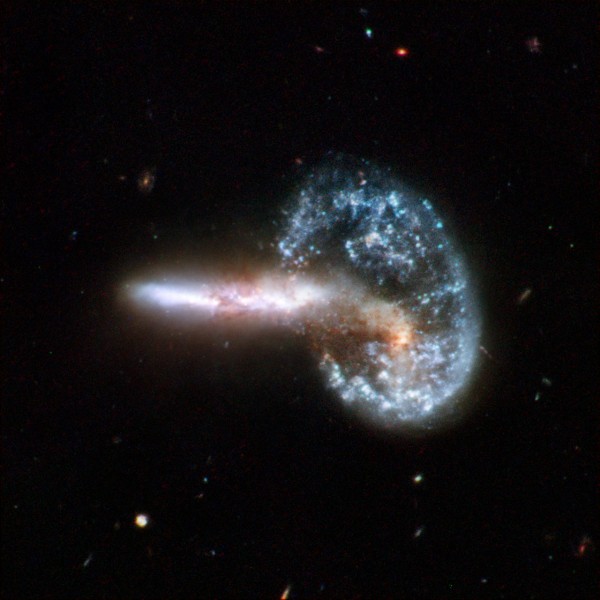
But later on, the two disks will begin to merge with one another, creating a sight much like that of interacting galaxies Arp 148. Shocks tens of thousands of light years in size could easily cause matter to blow outwards, perhaps even creating a brief ring-shape, as Arp 148 has. Large, galactic-sized obscuring regions that will appear as dust lanes in visible light (but that will glow brightly in the infrared) will exist in great abundance, as the star formation rate will increase above anything currently seen in our galaxy.
And then the real fun begins.
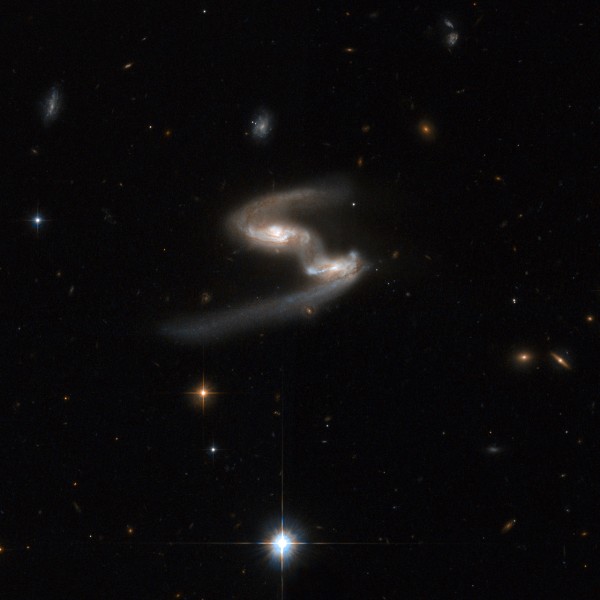
Because once that first pass-through of these two galaxies occurs, that spiral shape you know and love is ruined like a great galactic taffy-pull. Just like interacting galaxy ESO 77-14, a bridge of stars and gas will connect the galaxies, and the great dust lanes will be dead giveaways of just how distorted -- in three-dimensions, not just two -- these galaxies have become. Bright blue and red colors, evidence of hot young stars and ionized, star-forming regions, respectively, will both appear in abundance. While this particular pair of interacting galaxies is of slightly lower mass than the Milky Way and Andromeda, the physics largely remains unchanged.
And then, they head back towards each other once again.
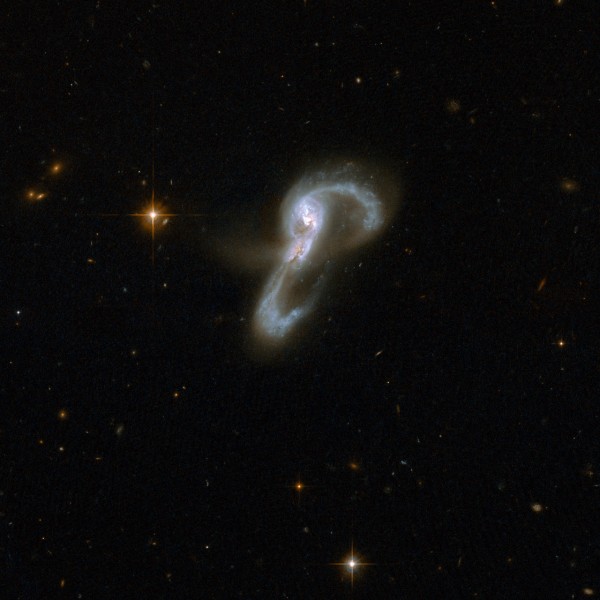
The huge arms will become even more extensive, curved, and warp, and may even U-turn back in on themselves, as they do for merging galaxy pair VV 705. Shown roughly mid-way through a merger, these flailing arms stretch more than twice the length of either original galaxy.
But despite the distortion and the chaos of the merging process, at the end of the day, gravity will have the final say.
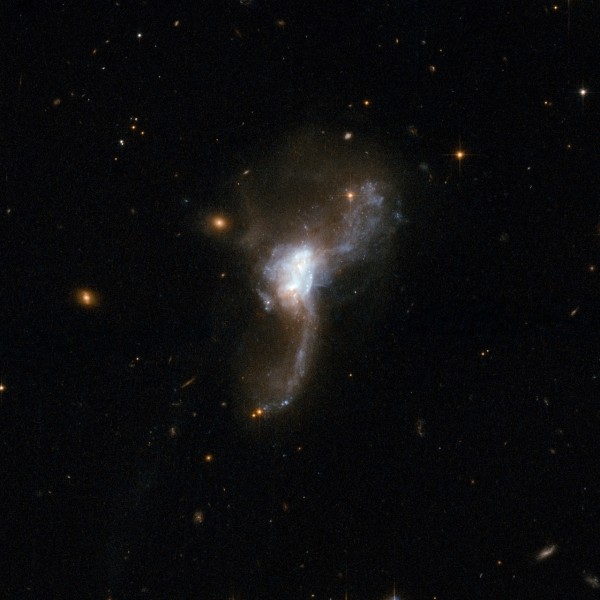
As ESO 148-2 begins to show, the two cores will eventually merge together into one new core, the vast majority of the matter strewn about in the collision will settle down and recollapse back onto the new, even more massive object, and over time, this will likely settle into a giant elliptical galaxy.
And so, you might ask, where did all these great Hubble images of interacting galaxies come from? And where can you get more of them?
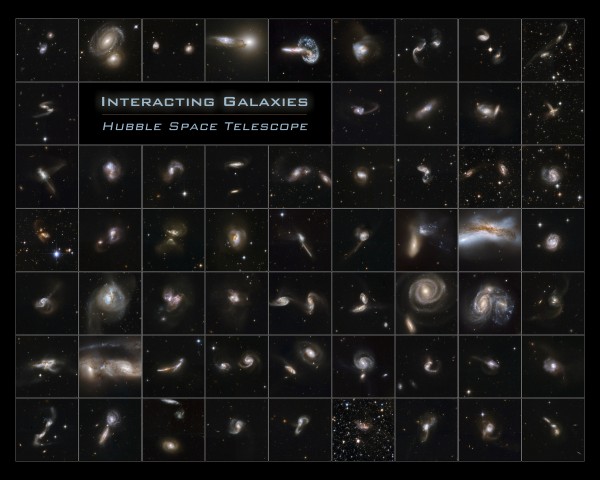
Three years ago, back when Hubble turned 18 (!), it took 59 deep, high-resolution images of interacting galaxies, which are all freely available to download, thanks to the Hubble Heritage team!
And so even though we -- and all life on Earth -- won't be around to see it, we can still know what the future of our Milky Way holds. Even when, well, it's going to be less than 50% Milky Way! And that's what our future will look like to an outsider.

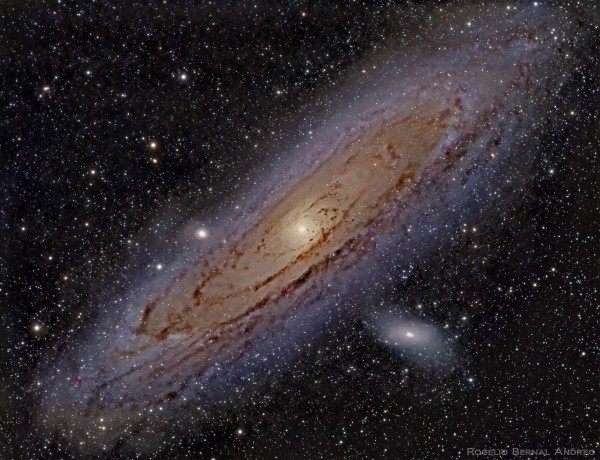

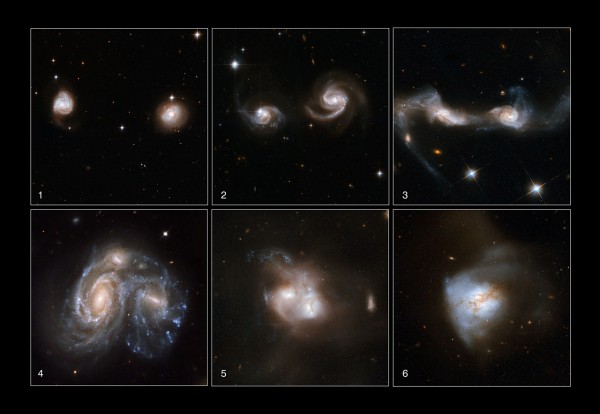
This blog is one of favorites and this post is terrific. Thanks.
In the video the ending configuration looks like it's only a tiny percentage of the original mass. What happened to all that stuff? And will there be a binary black hole pair at the center of the new galaxy?
What incredible pictures. Lucky for us to live now, rather than, say, in a trillion years, when all of that will have disappeared from view, even the CMB photons having been stretched to wavelengths greater than the visible universe, and only the odd hypervelocity star might give any hint at the origin of the universe... Compared to those folks in the far future, we've had it easy wrt observational cosmology!
Also, I didn't realise the Hubble is old enough to drink in the US now. Cheers! I still remember its launch, and being incredibly excited, even though I was just a small boy at the time...
That video was strangely erotic....
I'd like to see a sf novel about life on a planet orbiting one of those hypervelocity stars. Or maybe a short story. But what a crazy lonely existence.
(I mean, other than the planet of Krikkit.)
In the picture of Arp 148, the edge of one of the galaxies is headed into the middle of the other. So if both galaxies have blackholes at their centers, and Earth is relatively close to the edge of our galaxy, is Earth in any danger from Andromeda's center blackhole if the Milky Way and Andromeda collide in the same way?
Here are some questions I've thought of but never seen asked or answered:
Do stars ever spin off or form by themselves, isolated from galaxies?
Would/Could stars become separated happen because of collisions between galaxies, thrown off as the two disrupt each others' gravity?
Could it happen in other ways, such as single stars forming from smaller gas clouds apart from galaxies? Or do clouds always get pulled into galaxies and never appear by themselves after the big bang or supernovae?
.
If the more distant galaxies from us are accelerating even faster away than the near ones, what is Andromeda doing? Approaching us more slowly? But wouldn't an observer a billion light years away perceive Andromeda moving toward us faster?
@Occam #8: I have had the same question and hope that Ethan answers it. I also am curious as to how may millions of years the collision will last until "Mildromeda."
How can we know Andromeda will collide with us? We can measure the component of its relative velocity towards us, but we can't measure the tangential speed. So how can we know?
Awesome. That collection of Hubble images is my new desktop. Thanks Ethan
Occam, Mike:
Ethan's answer is probably 10x better than mine, but the short answer is that the Hubble rule (more distant galaxies are moving away at quicker rates) doesn't apply to the fifty or so in the Local Group, because we're all gravitationally bound to each other. It's only when you get out of that immediate gravitational lock that the rule applies.
I'm not sure what your second question (about observers a billion years away) implies.
AJKamper - suppose there were an observer 1 billion light years away, and on the exact plane of Earth/Andromeda, with Andromeda being the galaxy nearest the observer.
According to Hubble, the Milky Way would be receding faster than Andromeda; therefore, Andromeda would not be able to collide with the Milky Way.
Having said that, your explanation for the 50 galaxies in the local group being bound gravitationally to each other makes sense, so I withdraw the question.
Thank you.
As the man said [in a rather different context]: "the mind seemed to grow giddy by looking so far into the abyss of time." Terrific, beautiful post -- this blog is awesome. Thanks, Ethan.
Occam - "According to Hubble, the Milky Way would be receding faster than Andromeda; therefore, Andromeda would not be able to collide with the Milky Way."
You're assuming that the expanding space BETWEEN the galaxies is pulling them apart faster that gravity is pulling them together. This is not the case.
We now know that Andromeda is not only the closest large galaxy to the Milky Way, but it's also the name of Tonks' mom....
@Jochen:
"Also, I didn't realise the Hubble is old enough to drink in the US now. Cheers! I still remember its launch,"
Now you're making me feel old. I remember a middle school textbook that said something along the lines of, "Hubble will certainly be in orbit by the time you read this." I was reading the textbook in 1998, and seem to recall the book seemed out of date at the time.
Question: how long is the merger itself likely to take? From, say, the point where the interaction starts upping star formation in both galaxies, how long until there's a single new spiral (or a "settled" elliptical)?
@5: "Against A Dark Background" by Iain M Banks is set in a star system outside the galactic disk (though not hypervelocity so far as I recall). It's suggested in the text that the history of the local civilization is distorted (relative to those in other works by the same author) by the fact that they had no stars near enough to hope to reach with probes or colonists, which shrunk their horizons.
When the two galaxies collide there is little chance of a gravitational catastrophe for the Solar System, but the greatly increased supernova rate is quite likely to be a galaxy-wide catastrophe for life.
Thanks you very much! Wonderful news, i am reading this post in there, i am very happy now!
Uau! Very interesting indeed!! Do you think that's how our planet was born? I mean also with a collision of another galaxy? Sorry, I'm not a scientist or anything so forgive me if I'm saying anything stupid.
I have not so much words to say about your story.I read this whole story and it may be very useful story like a miracle for Science Student.
http://soundcloud.com/groups/stop-snoring-1